
Measuring at the hottest and coldest place in the world
TU/e alumnus and plasma expert Maarten De Bock has spent the past eleven years beavering away on methods for analyzing the fickle plasma of the ITER nuclear fusion reactor, in spite of numerous technical obstacles and considerable doubt about the economic feasibility of nuclear fusion. De Bock: “The potential benefits of fusion to the field of accessible and safe fuel involving a minimum of waste are, I believe, reason enough to at least study it and attempt it.”
From his office window in the main building, where hundreds of scientists of any number of nationalities work, Maarten De Bock watches how the world's largest nuclear fusion project is slowly taking shape. Behind a steep dike, cranes are constantly at work, hoisting and unloading parts. “When I came to work here, it was still a building site,” says the plasma expert employed by ITER. “Now 85 percent of the buildings are standing.”
Here, on a remote site in the Provençal village of Saint-Paul-lez-Durance, scientists are trying to demonstrate that in future nuclear fusion could become a feasible method for generating energy on a large scale.
This method has a long row to hoe. The idea has been inspired by the sun, where the fusion of hydrogen nuclei provides the energy that keeps our planet habitable. On earth, this type of fusion of ‘normal’ hydrogen nuclei would simply require too much pressure. Instead, in the Tokamak, the fusion reactor in the ITER project, heavier types of hydrogen particles, deuterium and tritium, will collide in a plasma at a temperature of 150 million degrees and fuse to create helium. Such collisions ideally release five to ten times as much energy (in the form of neutrons) as is pumped in.
But we aren't there by a long chalk: numerous technical problems are awaiting a solution and De Bock is one of the people who is beavering away on them.
Mind-bogglingly huge
Only by taking a look at the site where the Tokamak is supposed to stand can anyone grasp just how mind-bogglingly huge and complex the installation will be. The construction workers who are winding insulating tape around the gigantic magnetizing coils designed to contain the plasma cover dozens of meters walking just one circuit. Nonetheless, the coils must be manufactured with millimeter precision.
The cryogenic installations containing liquid nitrogen and helium intended to keep the magnets ice cold and superconductive fill a space that could accommodate a couple of sizeable sports halls. And the concrete building that will hold the Tokamak is reminiscent of a slightly smaller version of the Colosseum.
Tighten up a nut
The reactor will weigh 23,000 tons and contain roughly a million parts, but once the thing has been built, there'll be no question of ever popping in to tighten up a nut. Nonetheless, the scientists will need to know exactly what is happening in the donut-shaped heart of the reactor: is the plasma really stable, what is its temperature and density, what is its composition? This knowledge is needed to create exactly the right conditions for the nuclear fusion.
This explains the round and square openings in the concrete wall enclosing the Tokamak. These will house, among other things, the measuring equipment Maarten De Bock has been working on since 2014. In all sorts of ways, this equipment resembles that found in satellites. The machines must be very robust. Just as satellite equipment have to survive a launch and the solar wind, so the equipment in the Tokamak must be able to withstand the shock of any plasma eruption and the radiation released during the fusion reaction.
Both types of equipment are difficult to repair, very costly, and have some parts that must function in a vacuum. “That's pretty tricky, because you can't use any compressed air or oil, and even fingerprints can damage the vacuum,” tells De Bock. Finally, they are measuring things you can't actually touch and which you therefore need to measure indirectly based on the radiation released: visible light, microwaves, infrared and UV radiation, X-rays and radio waves.
Measuring with light
Take, for example, measuring the temperature of the charged particles in the plasma. That infernally hot plasma would melt a sensor instantly. But the particles emit light at a wave length that gives away their temperature. Mirrors on the interior walls of the Tokamak reflect this light in the right direction, after which it is channelled along glass windows and lenses and into fiber-optic cables. The fiber-optic cables are linked in turn to optical spectrometers (light meters) in a nearby building. In order to measure the magnetic fields, the researchers fire laser beams through the plasma. Mirrors reflect the laser light, which is then captured and analyzed: minute changes in the orientation of the polarization of the laser light reveals information about the magnetic field.
“These are just two of the fifty-odd diagnostic methods and hundreds of diagnostic projects at ITER,” says De Bock. “There are so many because ITER is still an experiment. At DEMO (the fusion reactor that ITER is due to succeed all being well, ed.) there are no doubt far fewer. First of all we have to find out which methods are the most cost-effective.”
Collaboration with alma mater
De Bock gained his doctorate eleven years ago at TU/e in the field of plasma control in the Tokamak. Although he has held a permanent position at ITER since 2014, he still collaborates regularly with his alma mater.
For example, a large measurement project will shortly be starting, led by TNO, in which the research institute DIFFER and TU/e are also involved. The aim of the project is to determine the density and the composition of the plasma with the help of spectroscopy. “The electrons in the reactor move back and forth chaotically and emit more light as the number of electrons increases. Based on this, you can establish the density of the plasma,” the engineer explains.
In addition, the color spectrum of the emitted light betrays which substances are floating around in the plasma. These are not only the fuels and the helium that comes into being after the fusion. “There are ‘polluting substances’, such as neon and carbon, that can provide extra information about the plasma,” tells De Bock. Neon is added by the researchers themselves in order to distribute the heat evenly, but the carbon isn't. However, the metal in the reactor wall contains carbon atoms and these may be released when ions in the plasma hit the wall. “If it turns out that carbon atoms are getting into the plasma, we might not need to add any neon at all, or less of it, to take our measurements.”
The measurement system will enable the researchers to detect not only carbon and neon, but also a wide range of other materials. “We'll capture a broad light spectrum using this measurement system,” says De Bock. “We'll be able to discover particles we hadn't initially expected.”
In all likelihood, an Eindhoven PhD candidate will couple a plasma model to a model of the diagnostic system, so that in advance the researchers can punch all kinds of buttons in a virtual environment in order to optimize the system.
Megalomaniac madness
The cranes, the futuristic-looking parts awaiting assembly, the researchers of all kinds of nationalities walking past, deep in discussion: it all helps create a happy hive of industry. Roughly 57 percent of the equipment is now complete. Nonetheless, according to the schedule, it will certainly be 2030 before the fusion reactor finally starts producing energy for a few minutes at a time. And another ten years later it should be managing a whole hour. Only if by then investors see the point of commercializing the technology might we perhaps in the 2050s be able to get power generated (partly) by nuclear fusion from our electrical outlets.
The long lead time and the estimate of the costs - repeatedly revised and currently some twenty billion euros - are part of the reason why skeptics tend to dismiss the project as megalomaniac madness. The containment of the plasma is an impossible task, they believe. The plan is to generate the necessary tritium within the reactor from lithium, but until this can be done the scarce fuel will come from a nearby nuclear power station. For the rest, keeping the reactor running is an expensive business and it creates a certain (limited) amount of radioactive waste.
A virtual 360⁰ tour of ITER.
At the other end of the spectrum stand the nuclear fusion fans who see the technology as the answer to all our energy problems. De Bock belongs to neither camp. He is cautiously optimistic. “In time ITER will produce energy; I am 99 percent sure of it. Who knows whether that will happen as early as 2030; I wouldn't stake my life on it. I estimate the chance as being 70 to 80 percent.”
That the project is technically possible says nothing, however, about its economic feasibility. “That depends on so many things: how quickly will the reactor wall wear out? How quickly will the price of the materials drop? ITER is currently the only purchaser of the material used to make the reactor vessel (the highly robust steel beryllium, ed.), so it is exorbitantly priced.”
On the other hand, ITER is responsible for an increase in the number of manufacturers of superconductive coils, which in turn has caused a drop in prices. And who knows, perhaps in twenty years' time superconductivity will be possible at room temperature. De Bock: “The potential benefits of fusion to the field of accessible and safe fuel involving a minimum of waste are, I believe, reason enough to at least study it and attempt it.”
Donut-shaped sun
Once it works, the nuclear fusion reactor in Cadarache will contain both the hottest and the coldest place on earth. The basic design of the Tokamak, the ITER project's nuclear fusion reactor, was devised back in the 1950s by the Russians Igor Tamm and Andrei Sakharov. The heart of the reactor is a donut-shaped vacuum chamber, in which is suspended a plasma of charged particles. The temperature of the plasma is 150 million degrees, even hotter than the sun. This is needed to facilitate the nuclear fusion. The heat released during nuclear fusion will be carried away by cooling water in the vacuum wall.
Although the plasma ring measures just six meters in diameter, the entire Tokamak is roughly five times bigger than that. This is mainly due to the gigantic superconductive magnets that encircle//surround the vacuum chamber. In conjunction with an electric current passing through the plasma itself, they create the magnetic fields that produce the plasma and keep it in place. Without these magnetic fields, the wall of the vacuum chamber would easily collapse and the plasma itself would cool down.
Using liquid helium, the magnets are kept at a temperature of 4 Kelvin (-269 degrees Celsius). At this temperature the material from which the magnets are made, niobium-titanium, is superconductive. This allows more electricity to pass through, enabling the magnets to achieve an energy of 51 gigajoules. The cryostat, the exterior of the Tokamak, keeps the sytem cold and provides its vacuum.
Political horse-trading
‘Genuine trust in each another must be based on deeds, not simply on words,’ said US president Ronald Reagan during a summit with his Soviet colleague Michael Gorbatsjov in 1985. At that meeting the leaders of the two world powers expressed their intention to collaborate on nuclear fusion. Two years later the project International Thermonuclear Experimental Reactor (ITER) was born. Over the years Europe, Japan, South Korea, India and China have joined the project.
That sworn enemies reached out to one another during the Cold War to make a success of nuclear fusion is nothing short of remarkable. Nonetheless, since then political frictions have quite frequently robbed the project of its momentum. In 2000 it was decided that a working fusion reactor should be achievable in 2018. However, haggling over the location and the contribution each partner should pay ITER lasted until 2006. Only in 2009 were the first shovels of dirt turned. The planning was wisely revised in 2015.
Europe will bear roughly 45.5 percent of the costs; the other six parties each pay 9.1 percent. The payment is made not in money, but in kind, so that the industrial sectors of the partners derive maximum benefit from this project worth billions.
Thus Europe is providing most of the reactor vessel, while India supplies the cooling system and Japan, a number of magnets. For each new part or external research project, the project leaders at ITER must turn to one of the seven agencies that award the contracts on behalf of the participating parties. Subsequently, universities, companies and knowledge consortiums can bid for the work.
Legal red tape
An advantage of this way of working is that it spreads the important know-how in the field of nuclear fusion across the participating countries. The drawback is that a great deal of time and money is tied up in bureaucratic and legal red tape. In practice, moreover, the vast majority of the assignments are snapped up by the industries of just a few countries. In Europe, these are France, Germany, Italy and Spain.
Although the occasional grumble is voiced about the agencies, what worries the scientists more is the coming Brexit: it is still unclear what consequences this will have for ITER. The harmony in which hundreds of scientists from 34 countries are collaborating in Cadarache is still sometimes at odds with the political reality in the wider world.

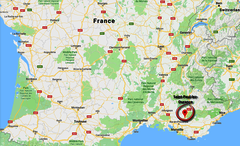
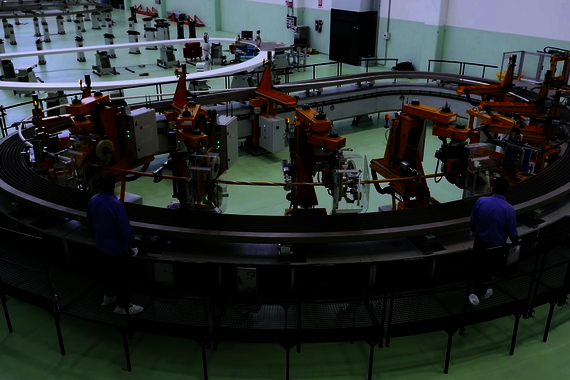
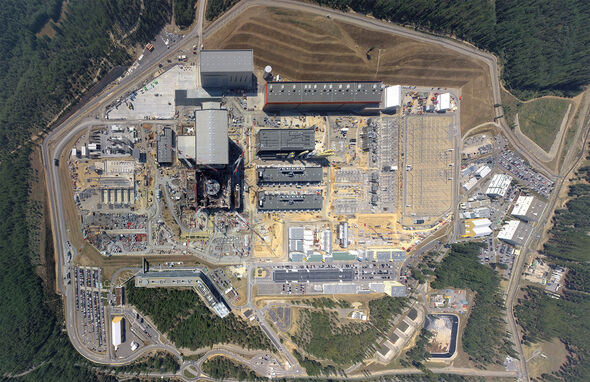
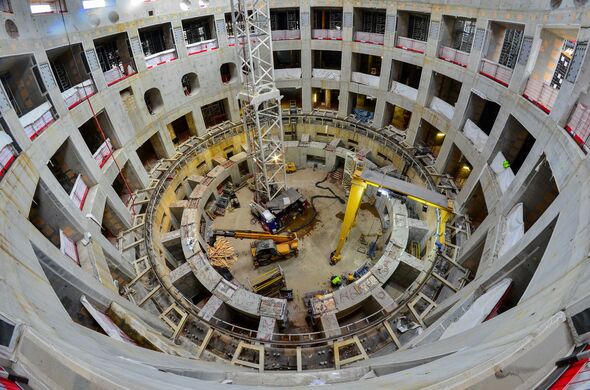
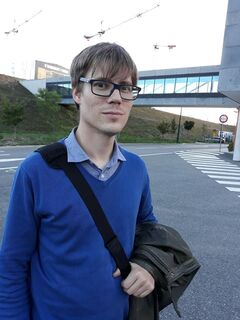
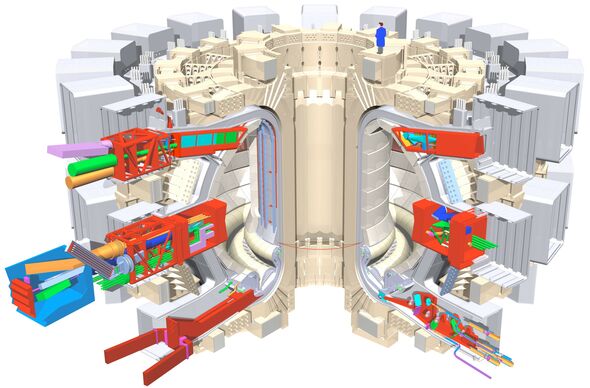
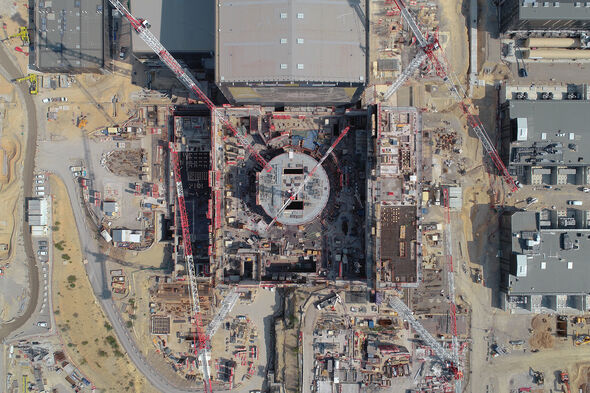
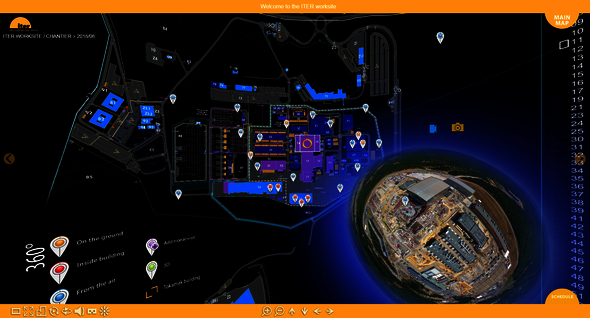
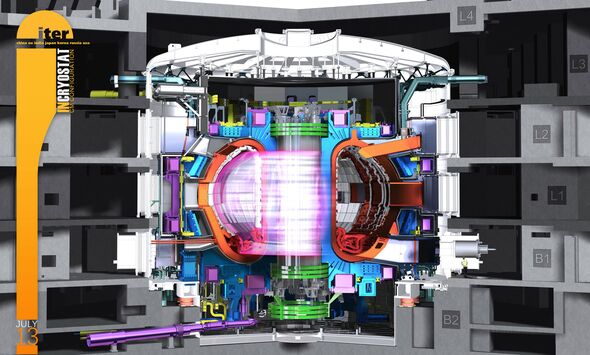
Discussion